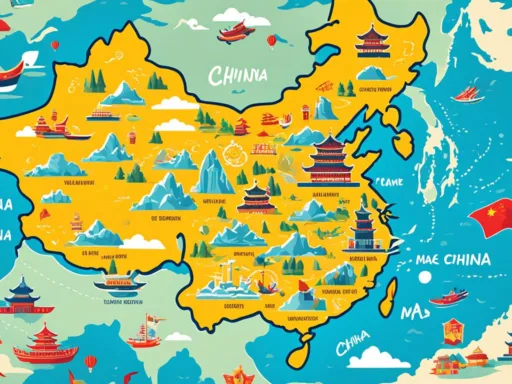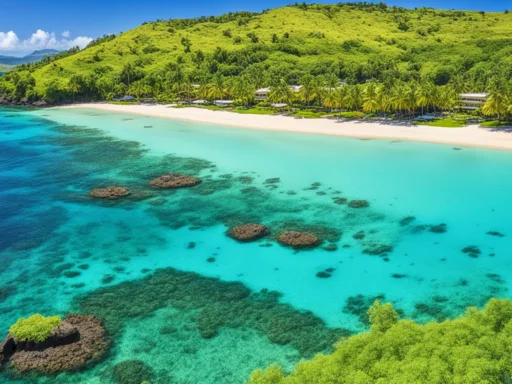When orchestrating the perfect escape, discerning travelers are often on the hunt for a gem that promises both serene shorelines and a rich cultural tapestry. Amidst the usual suspects in vacation planning, Sierra Leone emerges as an enigmatic contender. But when is the Best Time to Visit Sierra Leone? Does the secret to fully immersing yourself in its idyllic beaches and vibrant traditions lie within a specific span of months?
Appearing almost like an artist’s watercolor, Sierra Leone’s unparalleled beauty is framed by the Atlantic Ocean and dressed in every shade of green imaginable. For those plotting to unlock Sierra Leone’s treasures, timing is as crucial as the destination itself. Optimal Sierra Leone vacation planning hinges on understanding the subtle dance of weather and cultural events. Whether you’re itching for a tranquil beach retreat or a deep dive into the heart of West African celebrations, we have the essential Sierra Leone travel tips to guide your journey.
Delve into the rhythms of this hypnotic land where nature and culture collide, and discover why some secrets, like the prime season to visit, are worth sharing.
Key Takeaways
- Discern the ideal times to savor Sierra Leone’s pristine beaches and cultural experiences.
- Learn how the November to April dry season can enhance your travel and sightseeing.
- Uncover the beauty of Freetown Peninsula’s beaches during the late wet season.
- Explore cultural highlights like the Sierra Leone Marathon in May.
- Plan around the hot and dusty harmattan from December to February for the best visibility.
- Avoid travel complications by steering clear of the peak rainy months of July and August.
Understanding Sierra Leone’s Climate: A Guide to the Seasons
For those pondering their next adventure, a Sierra Leone climate guide is invaluable. This West African nation enjoys a tropical climate characterized by its proximity to the equator, offering consistent warmth year-round. Yet, to truly grasp what to expect from weather in Sierra Leone, appreciating the country’s distinct seasonal changes is essential. Here’s what travelers should know to plan their journey accordingly.
Tropical Weather Patterns and Regional Variations
Sierra Leone’s climate is as diverse as its culture, featuring mainly two prominent seasons that dramatically shape the landscape and experiences one can expect. The hot and wet season transforms the environment into a lush spectacle, while the hot, dry, and dusty period reveals a different aspect of Sierra Leone’s natural charm.
- In the central highlands, cooler temperatures at night provide a refreshing contrast to the daytime heat.
- Coastal regions are typically more humid, whereas the interior often presents dryer conditions.
Temperatures and Rainfall Throughout the Year
Understanding temperature trends and rainfall patterns is crucial for optimal trip planning, especially when trying to pinpoint the best times for specific activities or regions to visit.
| Season | Period | Temperature Range | Rainfall |
|---|---|---|---|
| Wet | June – October | 25°C – 29°C (77°F – 84°F) | High; especially in July and August |
| Dry | November – April | 27°C – 32°C (81°F – 90°F) | Low; dusty harmattan winds affecting visibility |
Travelers should be mindful of the heavy rains from June to October, impacting not only the verdant terrain but also the infrastructure, particularly in rural areas. Conversely, the dry season from November to April offers more reliable conditions for exploration, although it’s wise to prepare for the harmattan winds, particularly from December to February, which can shuffle plans with reduced visibility.
Awareness of the Sierra Leone climate guide is not just about comfort—it’s about capturing the essence of travel in this ravishing country. Whether you’re hiking through outlying rainforests or basking in the sun along the expansive beaches, the weather in Sierra Leone plays a pivotal role in your experience.
Best Time to Visit Sierra Leone
Sierra Leone, a jewel in the crown of African destinations, is most inviting during its dry season, spanning November to April. Known for its luscious landscapes and vibrant culture, this vibrant country peaks during these months, heralding the Sierra Leone tourist season. The Peak season in Sierra Leone is characterized by minimal rainfall, which spells good news for adventurers and cultural enthusiasts alike. 
However, those considering Off-peak travel Sierra Leone can find solace in the end of the wet season around late May, coinciding with the Sierra Leone Marathon—a time when the rains have subsided, yet the heavy influx of tourists has not begun. Despite the soaring temperatures in March and April, these months provide incomparable opportunities for photography and sightseeing, free from the obstacles of the wet season.
Traveling in the off-peak season allows one to explore Sierra Leone with fewer tourists, giving a more personalized and enriched experience.
| Month | Weather | Events and Festivals | Travel Advisory |
|---|---|---|---|
| November – April | Hot and Dry | Peak Tourist Season | Ideal for travel, photography, and sightseeing |
| March – April | Extremely Hot | — | Prepare for higher temperatures |
| May | Transitional, End of Wet Season | Sierra Leone Marathon | Best time for those seeking cultural experiences |
| June – October | Rainy Season | — | Travel can be challenging due to heavy rains |
In the balance between climate and cultural activities, tourists can optimize their Sierra Leone sojourn by aligning with the nation’s peak and off-peak seasons. Whether it’s the bustling peak season or a more serene off-peak interval, Sierra Leone promises a wealth of experiences for every type of traveler.
Sierra Leone Beach Escapades: When to Enjoy the Best Shores
Sierra Leone, a haven of undiscovered beauty, invites travelers to its pristine beaches, offering an authentic beach vacation. Timing is key to experiencing these golden bays and turquoise lagoons at their most splendid. Let’s dive into the optimal moments to soak up the sun on this spectacular stretch of West African coast.
Golden Bays and Turquoise Lagoons: Timing Your Beach Visit
For beach aficionados looking for the quintessential Sierra Leone beach vacation, the late wet season, spanning late September to October, presents a marvelous opportunity. Post-monsoon skies clear up, unveiling crystal blue heavens. Golden sands are washed and the water sparkles clearer, inviting one to witness nature’s renewing cycle.
Off-Season Beach Wonders: Late September and October Highlights
The postcard-perfect scenery of Sierra Leone’s coasts during the off-season is not the only attraction. Fewer visitors equate to more tranquil and personal encounters with the coastline’s splendor. The Freetown Peninsula, notably beaches like Tokeh and River Number 2, come to life with less crowd and more peaceful moments.
The comparative quietness of this period brings forth opportunities for both relaxation and adventure. Turtle Islands, albeit challenging to reach, are worth the journey for their remote, undeveloped beauty. Here’s a breakdown of why late wet season beach visits are a must in Sierra Leone:
| Feature | Early Wet Season | Late Wet Season | Dry Season |
|---|---|---|---|
| Beach Ambience | Heavy Rains | Clearing Skies, Less Crowded | More Tourists, Dustier Climate |
| Beach Accessibility | Difficult Travel | Easier Travel, Lush Landscapes | Best Infrastructure, Dry Roads |
| Water Clarity | Reduced Visibility | Improved Visibility, Ideal for Snorkeling | Good, but Hamattan Can Affect Visibility |
| Wildlife Encounters | Less Likely | More Active Wildlife Post-Rains | Different Seasonal Species |
In a blend of solitude and lushness, the Sierra Leone shorelines await, particularly during these lesser-known periods. Here, the allure of an untouched paradise and the call of adventure intertwine. Every beach tells a story and the late September to October timeline promises a narrative of rejuvenation, blissful quiet, and incomparable beauty.
Experiencing Wildlife and Natural Beauty in Sierra Leone
For those seeking an escape into a world brimming with natural wonder and untamed wildlife, Sierra Leone offers an abundance of ecotourism opportunities. Nestled within West Africa, this nation is lauded as a unique wildlife destination. It is the proud home of the Tiwai Island Wildlife Sanctuary, which boasts the second-highest concentration of primates on the globe. Here, visitors can immerse themselves in the thrill of spotting the elusive Diana monkey or the enchanting pygmy hippopotamus amidst a kaleidoscope of indigenous flora and fauna.
Equally inspiring for nature aficionados is the Tacugama Chimpanzee Sanctuary. A revered bastion of wildlife conservation, Tacugama is actively involved in the rehabilitation of chimpanzees, allowing travelers to witness these compelling creatures up close. Ecotourism in Sierra Leone is not just about the observation of wildlife; it is an experience that supports the protection and preservation of the unique biodiversity that Africa has to offer.
Amidst the verdant landscape lies an untapped serenity that beckons the intrepid explorer. Sierra Leone’s beauty is largely undisturbed by the typical tourist footfall, which means its natural enchantments remain pristine. For the most impactful Sierra Leone travel advice, include these exceptional wildlife sanctuaries in your journey. By venturing to Sierra Leone, you will not only witness nature’s unparalleled beauty but also contribute to the noble cause of sustaining it for generations to come.






